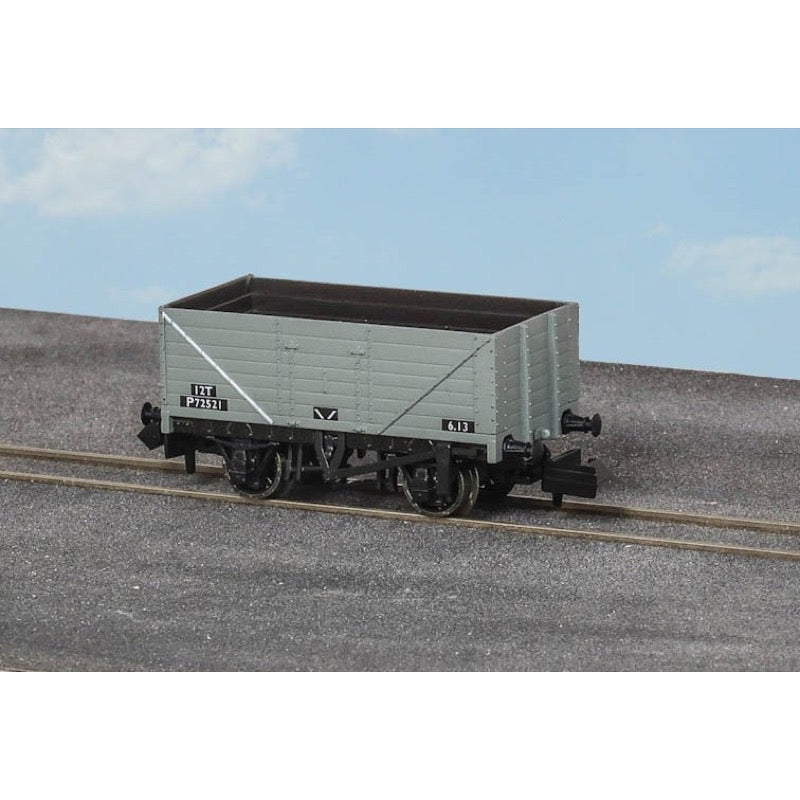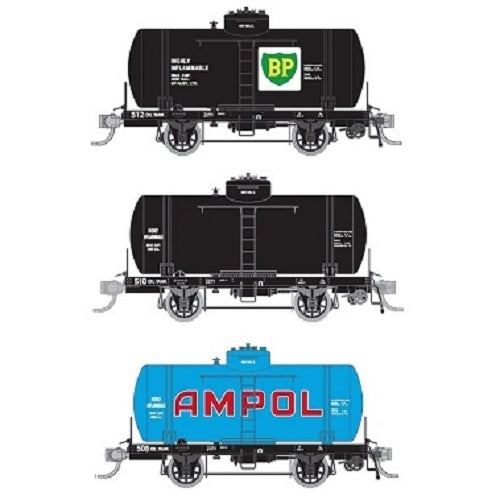
Southern Rail HO XGAY Grain Hopper ATN Access As Built 3 Pack 0010-L 0011-U 0012-G
112.00
$
<h3>Features </h3> <ui>
<li>READY TO RUN </li>
<li>HIGHLY DETAILED BODIES, UNDERFRAMES & ENDS</li>
<li>INJECTED MOULDED BODYWORK</li>
<li>METAL ETCHED WALKWAYS & PARTS</li>
<li>FACTORY PAINTED & DECORATED</li>
<li>GENUINE KADEE 58 COUPLERS</li></ui>
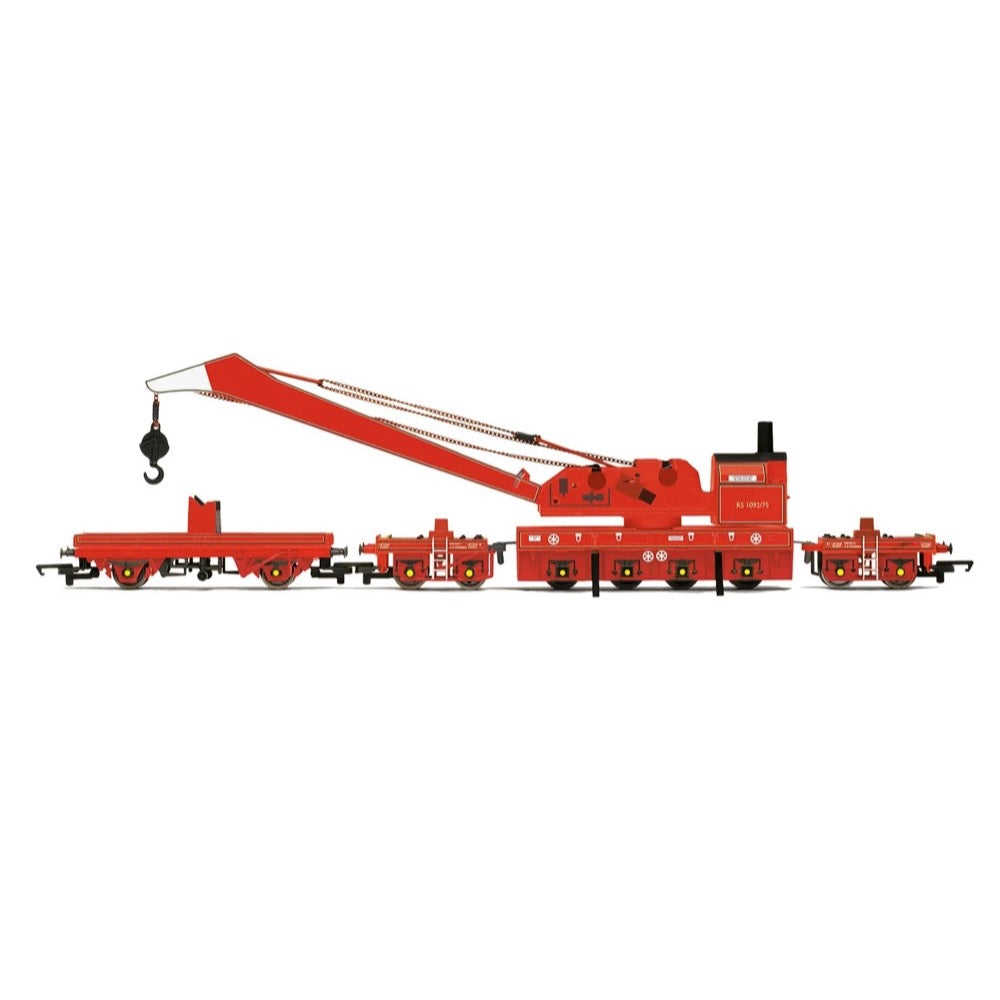
Hornby R60077 OO BR Operating Maintenance Crane Era 4
50.00
$
<p>The breakdown crane is as much a part of railway infrastructure as much as it is a wagon. Such cranes began to appear in 1875, growing in size and complexity.</p>
<p>Over 176 cranes have appeared around the UK since their introduction, with the most modern cranes able to lift entire locomotives off the ground. Being the national operator from 1948 BR inherited a patchwork of rolling stock from its constituent companies, as they had done twenty five years earlier, including all breakdown cranes in service.</p>
<p>BR employed some of the largest rail cranes, with the heaviest of the lot designed for the heaviest of tasks, such as the re-railing of locomotives, or tasks that may see a locomotive needing to be removed from the track all together</p>
<h3>Specification</h3>
<ul>
<li>Item Length - Without Packaging (cm): 12</li>
<li>Item Height - Without Packaging (cm): 5</li>
<li>Item Width - Without Packaging (cm): 3.5</li>
<li>Item Weight - Without Packaging: 0.09</li>
<li>Item Scale: 1:76 Scale 00 Gauge</li>
<li>Finish: Painted</li>
<li>Colour: Black</li>
<li>Gauge: OO</li>
<li>Operator: BR</li>
<li>Designer: BR</li>
<li>Livery: BR Black</li>
<li>Minimum Curve (mm): Radius 2</li>
<li>Number of Parts: 1</li>
<li>Buffer Type: Moulded Plastic Buffers</li>
<li>Coupling Type: NEM Tension Lock</li>
</ul>
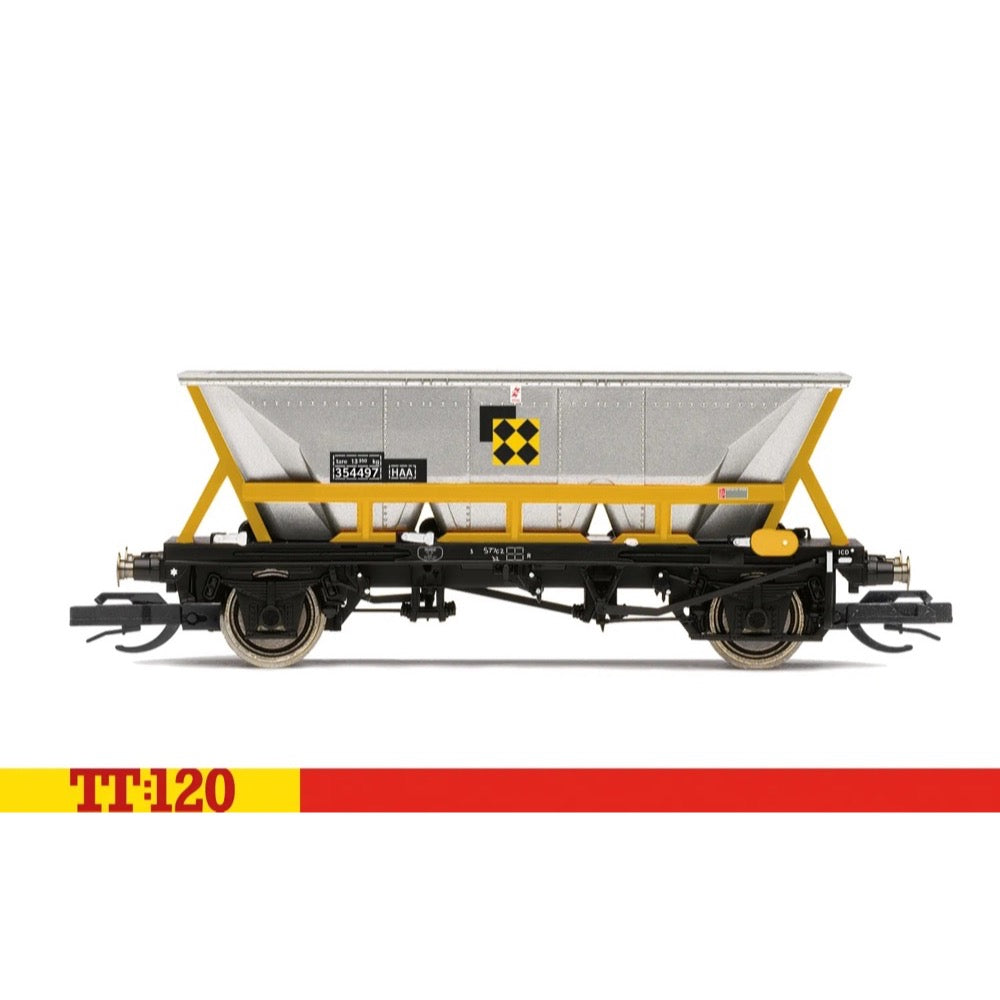
Hornby TT6014A TT HAA Hopper BR Coal Sector
15.00
$
<p>Built from 1964 to 1977, HAA wagons were built as method to move coal more efficiently, particularly with the aim of improving to supply of coal to power stations. It was intended that trains of these wagons could run in a continuous loop from the colliery to the power station and back, with machinery in place to allow loading and unloading at slow speeds. In reality it was often the case that the infrastructure to allow this type of running did not exist, particularly at the collieries and on the loading side of the journey, but nonetheless these wagons greatly improved coal transfer. With the decline of Britain's coal industry these previously extremely common wagons have now become extremely rare with most having been either scrapped or rebuilt as another form of wagon.</p>
<h3>Specification</h3>
<ul>
<li>Item Length - Without Packaging (cm): 7.6</li>
<li>Item Height - Without Packaging (cm): 2.8</li>
<li>Item Width - Without Packaging (cm): 1.9</li>
<li>Item Weight - Without Packaging: 0.01</li>
<li>Item Scale: 1:120 Scale</li>
<li>Finish: Painted</li>
<li>Colour: Silver</li>
<li>Gauge: TT</li>
<li>Operator: BR</li>
<li>Designer: BR</li>
<li>Livery: Coal Sector</li>
<li>Minimum Curve (mm): Radius 1</li>
<li>Number of Parts: 1</li>
</ul>
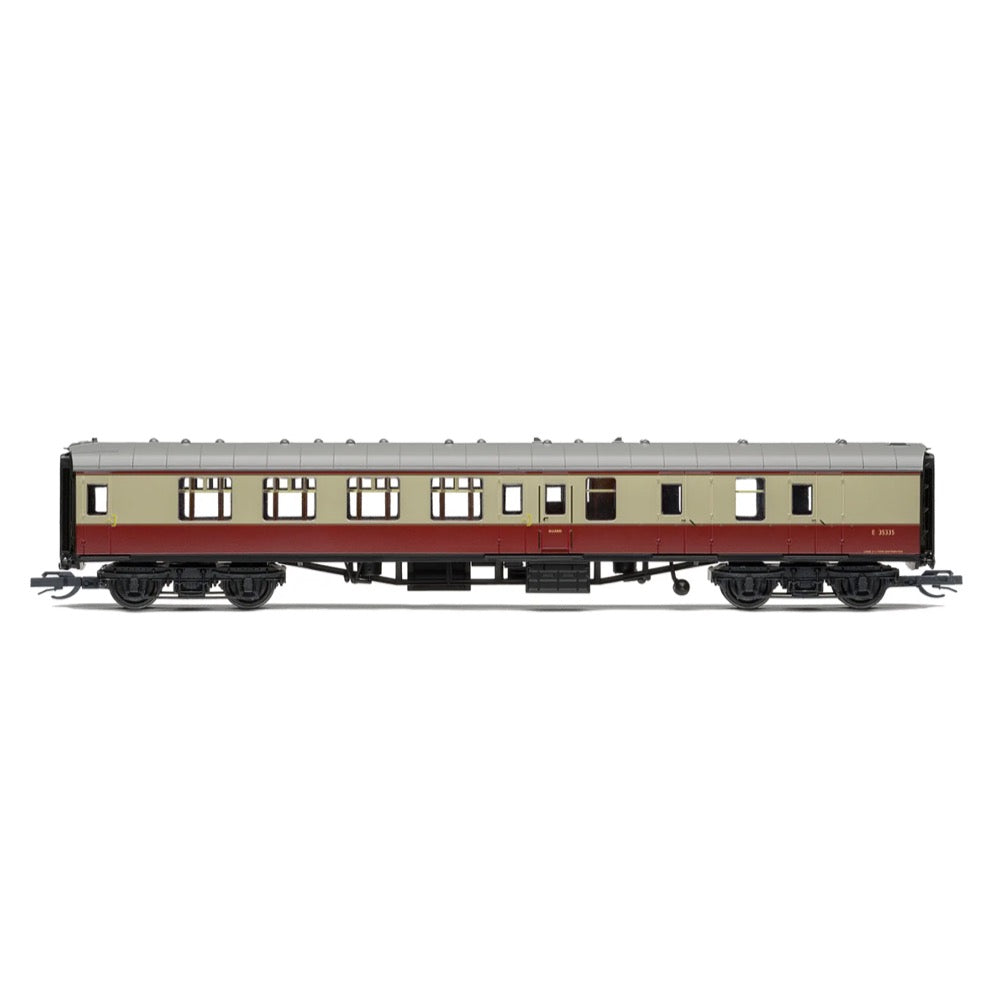
Hornby TT4006A TT BR Mk1 Brake Composite Corridor E35335
27.00
$
<p>Upon nationalisation in 1947 the newly formed British Railways saw the need to standardise their passenger stock, having inherited a patchwork of coaches of all different specifications from each of the big four who were in turn sometimes running a wide variety of stock from their constituent companies. This new coach would have to be perfect for every possible use that the new BR may need it for, which could be tricky when the coach would need to be used on high speed summer boat trains in the south and cold winter services in the north of Scotland.</p>
<p>These coaches would be constructed from 1951 to 1963 with only one significant change made during this time, a swapping of bogies in the last gasps of the Mark 1s build cycle. The Mark 1 coach as it would be designated was designed to be a ‘go anywhere, do anything’ coach utilising the best features from each of the big four coaches the company had inherited. The Mark One coaches were stronger than the designs they replaced, with their introduction being commended in rail safety reports. These coaches would be in stock in one form or another in the UK until 2010, when the Mark One based Class 421 was withdrawn from service on the Lymington Branch Line.</p>
<h3>Specification</h3>
<ul>
<li>Item Length - Without Packaging (cm): 16.6</li>
<li>Item Height - Without Packaging (cm): 2</li>
<li>Item Width - Without Packaging (cm): 2.1</li>
<li>Item Weight - Without Packaging: 0.04</li>
<li>Item Scale: 1:120 Scale</li>
<li>Finish: Painted</li>
<li>Colour: Red</li>
<li>Gauge: TT</li>
<li>Operator: BR</li>
<li>Designer: British Railways</li>
<li>Livery: Carmine and Cream</li>
<li>Minimum Curve (mm): Radius 1</li>
<li>Number of Parts: 1</li>
</ul>
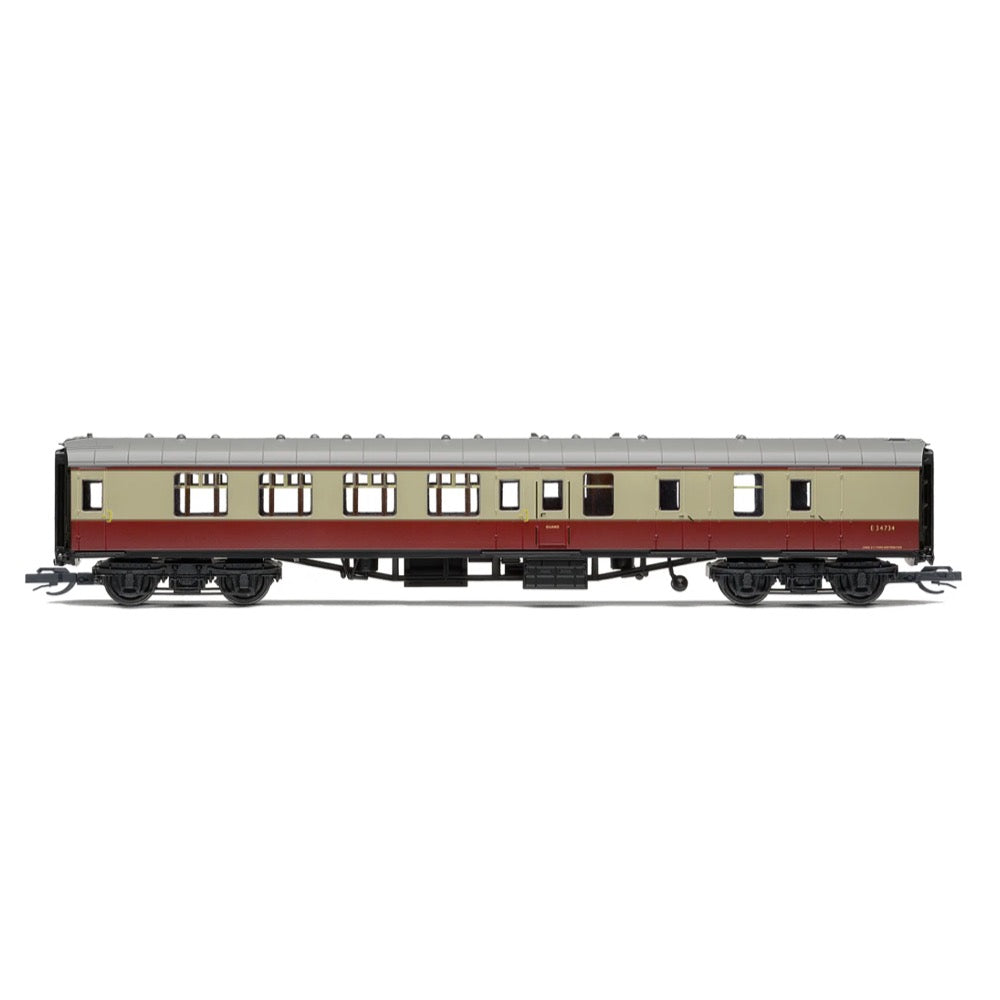
Hornby TT4006 TT BR Mk1 Brake Composite Corridor E34734
27.00
$
<p>Upon nationalisation in 1947 the newly formed British Railways saw the need to standardise their passenger stock, having inherited a patchwork of coaches of all different specifications from each of the big four who were in turn sometimes running a wide variety of stock from their constituent companies. This new coach would have to be perfect for every possible use that the new BR may need it for, which could be tricky when the coach would need to be used on high speed summer boat trains in the south and cold winter services in the north of Scotland.</p><p>These coaches would be constructed from 1951 to 1963 with only one significant change made during this time, a swapping of bogies in the last gasps of the Mark 1s build cycle. The Mark 1 coach as it would be designated was designed to be a ‘go anywhere, do anything’ coach utilising the best features from each of the big four coaches the company had inherited. The Mark One coaches were stronger than the designs they replaced, with their introduction being commended in rail safety reports. These coaches would be in stock in one form or another in the UK until 2010, when the Mark One based Class 421 was withdrawn from service on the Lymington Branch Line.</p><h3>Specifications</h3><ul>
<li>Item Length - Without Packaging (cm): 16.6</li>
<li>Item Height - Without Packaging (cm): 2</li>
<li>Item Width - Without Packaging (cm): 2.1</li>
<li>Item Weight - Without Packaging: 0.04</li>
<li>Item Scale: 1:120 Scale</li>
<li>Finish: Painted</li>
<li>Colour: Red</li>
<li>Gauge: TT</li>
<li>Operator: BR</li>
<li>Designer: British Railways</li>
<li>Livery: Carmine and Cream</li>
<li>Minimum Curve (mm): Radius 1</li>
<li>Number of Parts: 1</li>
</ul>

Hornby R40291 OO LSWR 6 Wheel Coach 3rd Class 821
26.00
$
<p>This 6 Wheeled Coach is a representation of the many which served on the London and South Western Railway (LSWR) in the late 19th and early 20th century.</p>
<p>Small coaches such as this 6 Wheeled Coach proved especially good at branch line work, where their small size was more acceptable to lower passenger numbers, and enabled the traversing of tight radius curves and hauled by smaller engines.</p>
<p>This LSWR coach is modelled as having step boards to enable access at stations with low platforms and oil lamp lighting.</p>
<h4>Include</h4>
<ul>
<li>1x Rolling Stock Coach</li>
</ul>

Hornby R60131 Touax KFA Container Wagon 3x20 Containers Era11
37.00
$
<p>A tank container or tanktainer is an intermodal container for the transport of liquids, gases and powders as bulk cargo. It is built to the ISO standards, making it suitable for different modes of transportation; as such, it is also called an ISO tank. Both hazardous and non-hazardous products can be transported in tank containers.</p>
<h3>Specifications</h3>
<ul>
<li>Item Length - Without Packaging (cm): 8</li>
<li>Item Height - Without Packaging (cm): 5</li>
<li>Item Width - Without Packaging (cm): 3.5</li>
<li>Item Weight - Without Packaging: 0.02</li>
<li>Item Scale: 1:76 Scale 00 Gauge</li>
<li>Finish: Painted</li>
<li>Colour: Blue</li>
<li>Operator: Concisa, Hoyer & TIP</li>
<li>Designer: KFA</li>
<li>Livery: AWS, Maritainer & SCI</li>
<li>Minimum Curve (mm): Radius 2</li>
<li>Number of Parts: 3</li>
</ul>
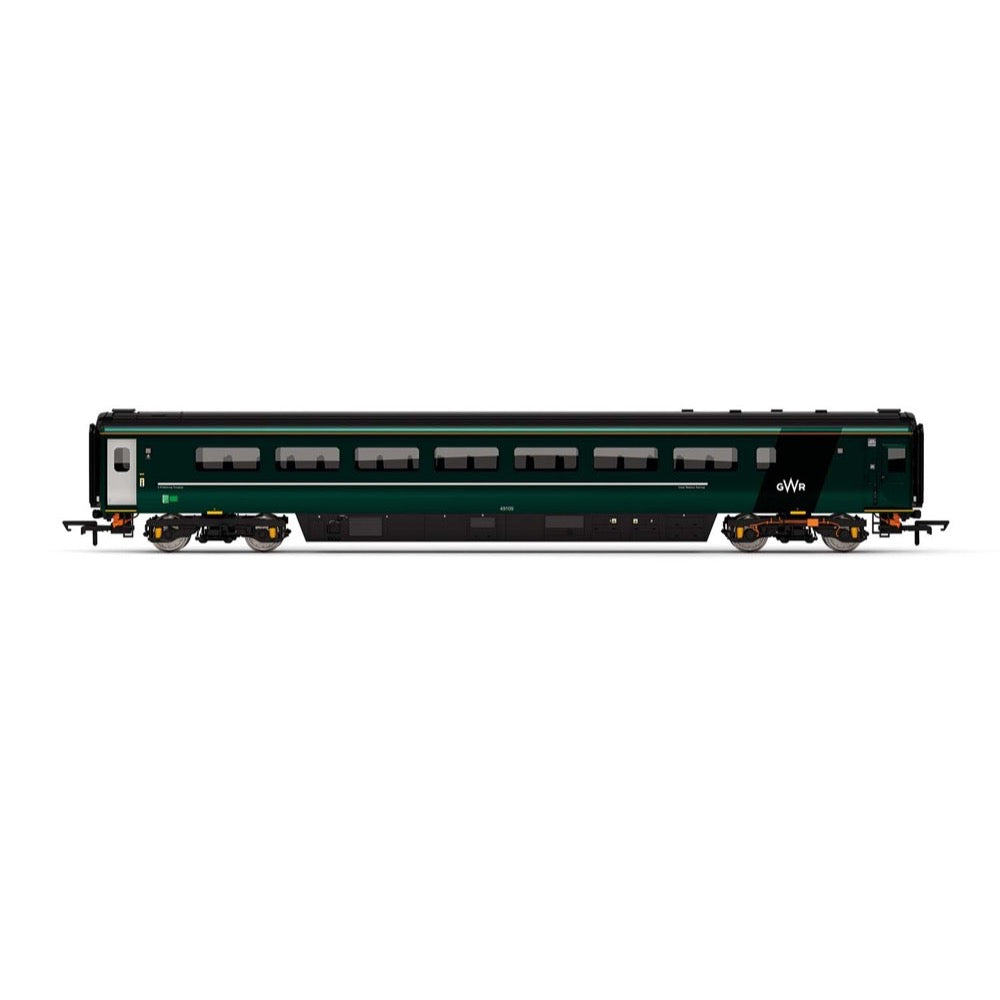
Hornby R4896B OO GWR Mk3 Sliding Door Trailer Guard Standard TGS 49109
38.00
$
<p>In-order to allow running at 125 mph on Britain's railways, new rolling stock was needed by British Railways to replace the aging Mk2s. Significant improvements included new secondary air suspension between the bogies and the coach body as well as aerodynamic skirting on the underframe. Mk3 Coaches are 75ft (23m) long enabling far greater capacity than older coaches. Mk3 Coaches also incorporate disk brakes and wheel slip protection enabling faster deceleration.</p>
<p>The first Mk3 Coaches to be delivered were used as part of the HST prototype along with the two Class 41 diesel power cars in 1972. Mk3 Coaches entered service in 1975 along with the Class 43 forming the iconic InterCity 125 trainset.</p>
<p>Mk3 Coaches continue to be a mainstay on British railways in the 21st century despite their increasing age. With the introduction of the new Class 800 and 802 IEP units on the Great Western Mainline, GWR cascaded remaining IC125 sets to rural routes shortening them to 4 passenger coach 'Castle' sets. These Mk3s are also updated to comply with new regulations mandating considerations such as improved toilet facilities, disabled access and automatic doors.</p>
<h3>Specification</h3>
<ul>
<li>Item Length - Without Packaging (cm): 30.3</li>
<li>Item Height - Without Packaging (cm): 5</li>
<li>Item Width - Without Packaging (cm): 3.5</li>
<li>Item Weight - Without Packaging: 0.19</li>
<li>Item Scale: 1:76 Scale 00 Gauge</li>
<li>Finish: Painted</li>
<li>Colour: Green</li>
<li>Operator: GWR</li>
<li>Designer: BREL</li>
<li>Livery: GWR Green</li>
<li>Minimum Curve (mm): Radius 2</li>
<li>Number of Parts: 1</li>
</ul>
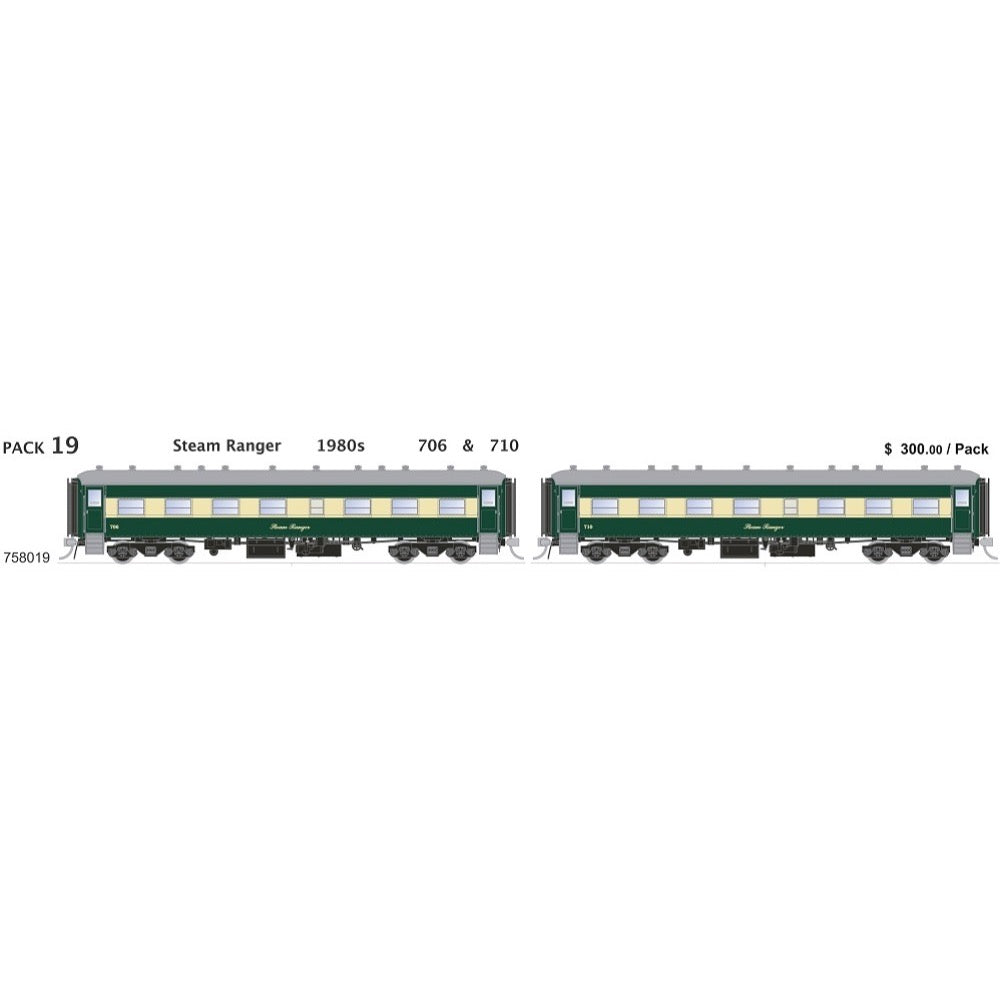
SDS Models 758019 HO SAR 700 Class Passenger Cars Pack 19 SteamRanger 706 and 710 2 Car Pack
$125.00

SDS Models 758019 HO SAR 700 Class Passenger Cars Pack 19 SteamRanger 706 and 710 2 Car Pack
125.00
$
<p>The South Australian Railways introduced 36 steel bodied country passenger cars between 1936 and 1941. Of these cars the last 24 built, entered service in 1940/41. They were all of a similar external appearance and the same overall length.</p>
<p>16 were coded 700 to 715, these were Second class centre aisle cars. 4 were coded 750 to 753, these were Composite class centre aisle cars. 4 were coded 780 to 783, these First class centre aisle cars.</p>
<p>Originally introduced with frameless full drop windows, they were progressively replaced with half drop chrome plated framed windows from the mid 1950s through to the very early 1960s.</p>
<p>Introduced in Hawthorn green and cream with black roofs up until the mid to late 1960s, when they were progressively repainted into Regal red and Silver to match the newer country stock.</p>
<p>In the early 1970s 4 cars were transferred to standard gauge to work between Broken Hill and Peterborough. Later in the early 1980s several cars were hired to Victorian Railways.</p>
<p>Many 700 series cars also saw service with West Coast Railway in Victoria, Steam Ranger in South Australia, North Rivers Railroad with Ritz Rail in Northern NSW.</p>
<h3>Features</h3>
<ul>
<li>Highly detailed Ready-to-Run 1/87 Scale HO gauge model </li>
<li>18” Minimum radius recommended</li>
<li>Precisely tooled plastic body (ABS)</li>
<li>Genuine Kadee scale head whisker coupler </li>
<li>Separately applied handrails and detail parts</li>
<li>Two body style options: Original 8 vent roof and later 13 vent roof</li>
<li>Two window style options: Original Beclawat frameless full drop window and later Wahner framed half drop window</li>
<li>Three full interior options for each class and with appropriate seat covering colour</li>
</ul>



